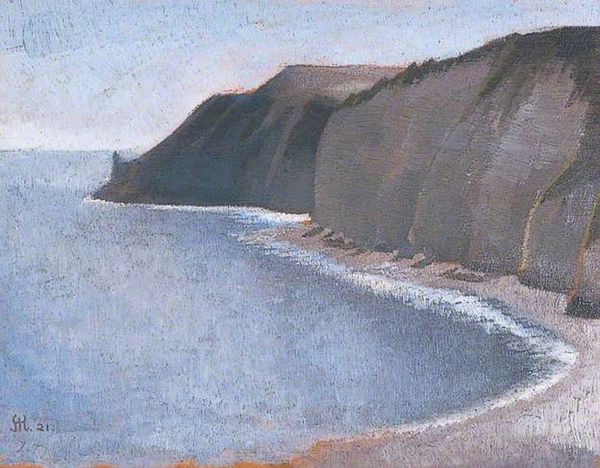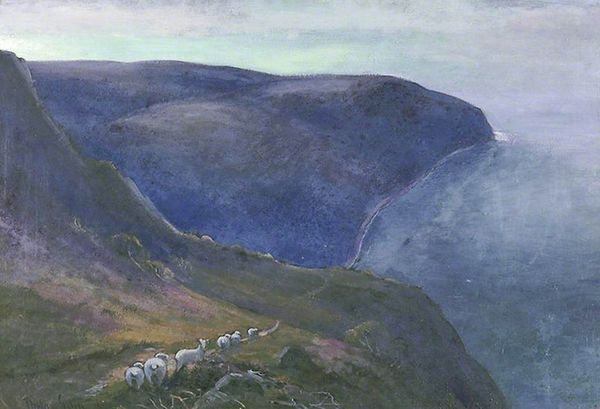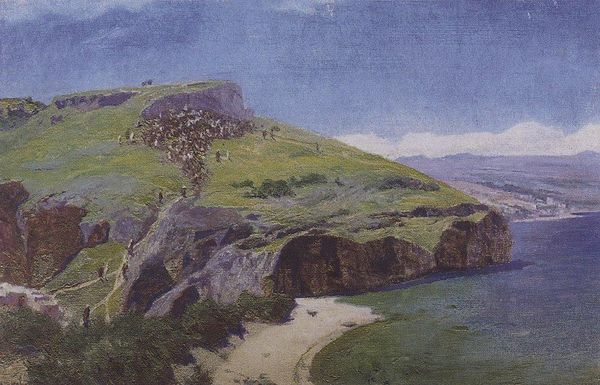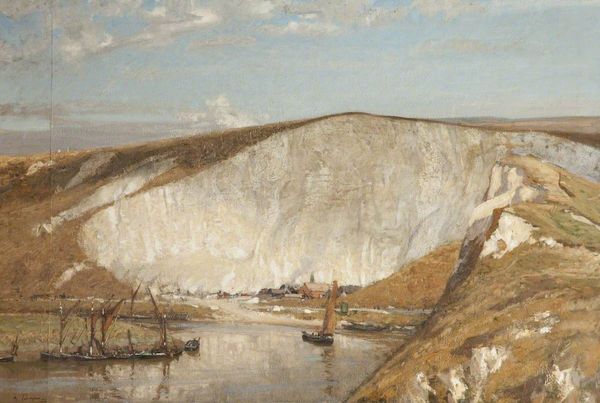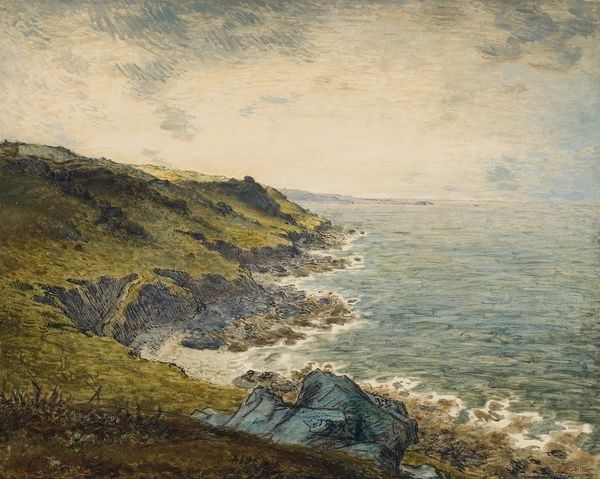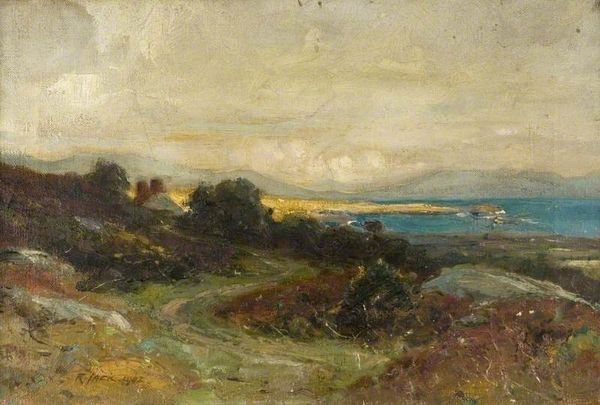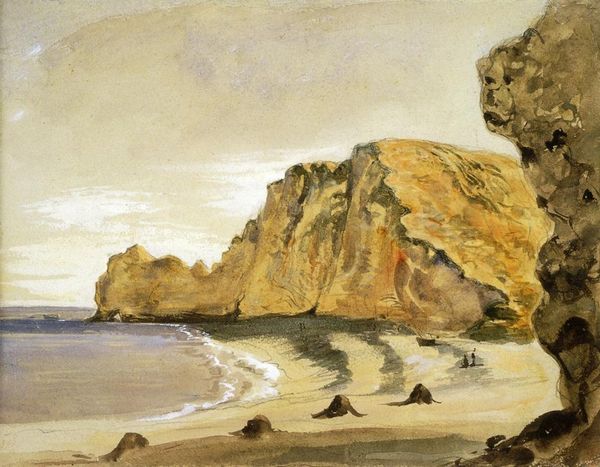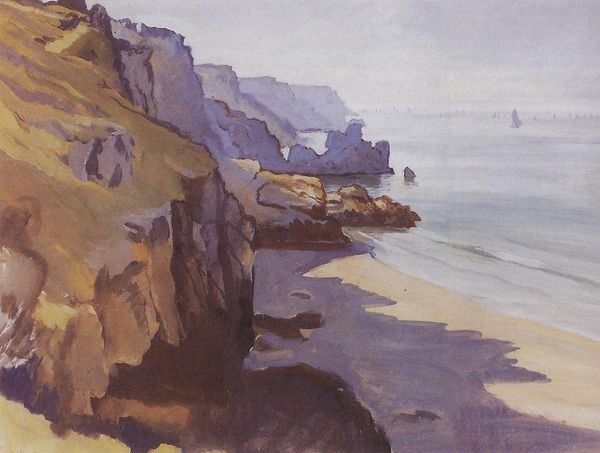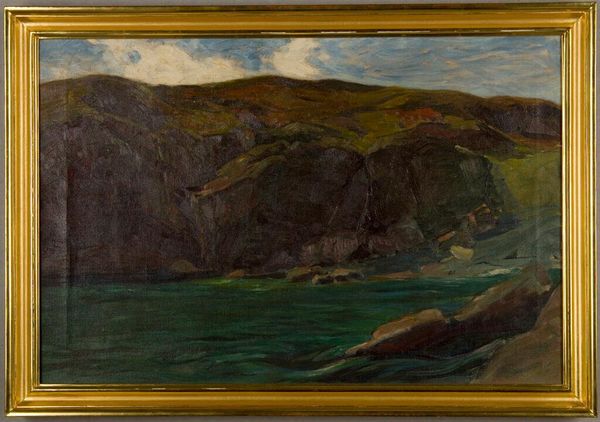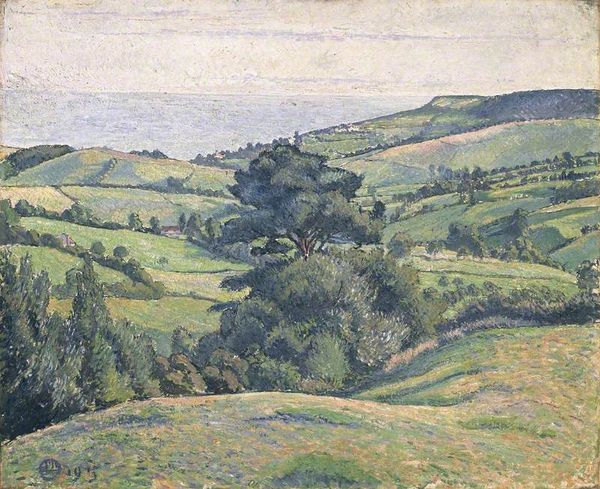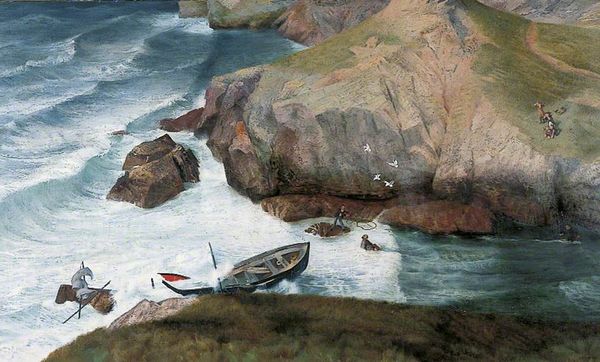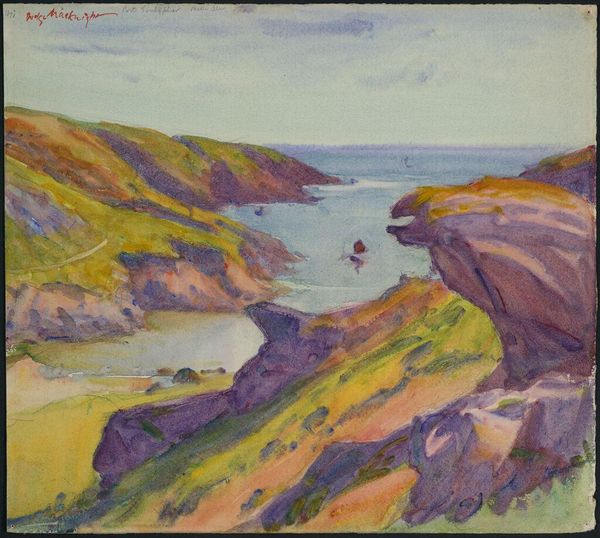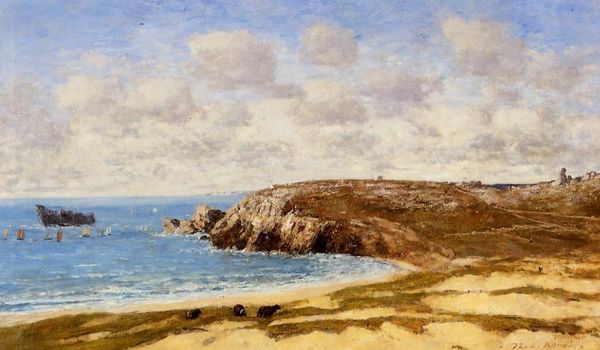
painting, plein-air, oil-paint, impasto
#
painting
#
plein-air
#
oil-paint
#
landscape
#
impressionist landscape
#
figuration
#
oil painting
#
impasto
#
romanticism
#
seascape
#
genre-painting
#
realism
Copyright: Public domain
Editor: So, here we have "Sheep on Cliffs" by Algernon Talmage, created with oil paint, and I find the combination of the tranquil scene and the imposing cliffs quite striking. It makes me wonder about our relationship with nature. How do you interpret this work? Curator: This piece, for me, opens up conversations about land use, ownership, and the representation of rural life, especially when we consider the economic and social context of the time it was created. The seemingly idyllic image of sheep grazing belies complex power dynamics. Who owns this land? Who benefits from its resources? Consider the romantic idealization of the countryside, often divorced from the realities faced by agricultural workers. Does the painting perpetuate a certain myth or challenge it in some way, perhaps subtly hinting at those tensions? Editor: That's interesting. I was focusing more on the aesthetics and the kind of peaceful feeling it evokes, but I didn't really think about it politically. Curator: Well, even that peaceful feeling is constructed. Ask yourself: whose peace is being depicted here? And at what cost? Paintings like this were often consumed by an urban elite, seeking an escape from the industrial world, a world they themselves perpetuated. How does the artist navigate the politics of land and labor in such a beautiful setting? Editor: So you’re saying the artist might be making a statement, even if it's not immediately obvious. Curator: Exactly! Or maybe the artist themselves isn't even fully aware of it! That's precisely where art historical and cultural analysis become powerful tools, revealing the silent voices and unseen structures embedded in the work. Editor: That definitely gives me a new perspective on landscape painting. Thanks, that was insightful! Curator: My pleasure. Always look beyond the surface, and remember, art never exists in a vacuum.
Comments
No comments
Be the first to comment and join the conversation on the ultimate creative platform.
